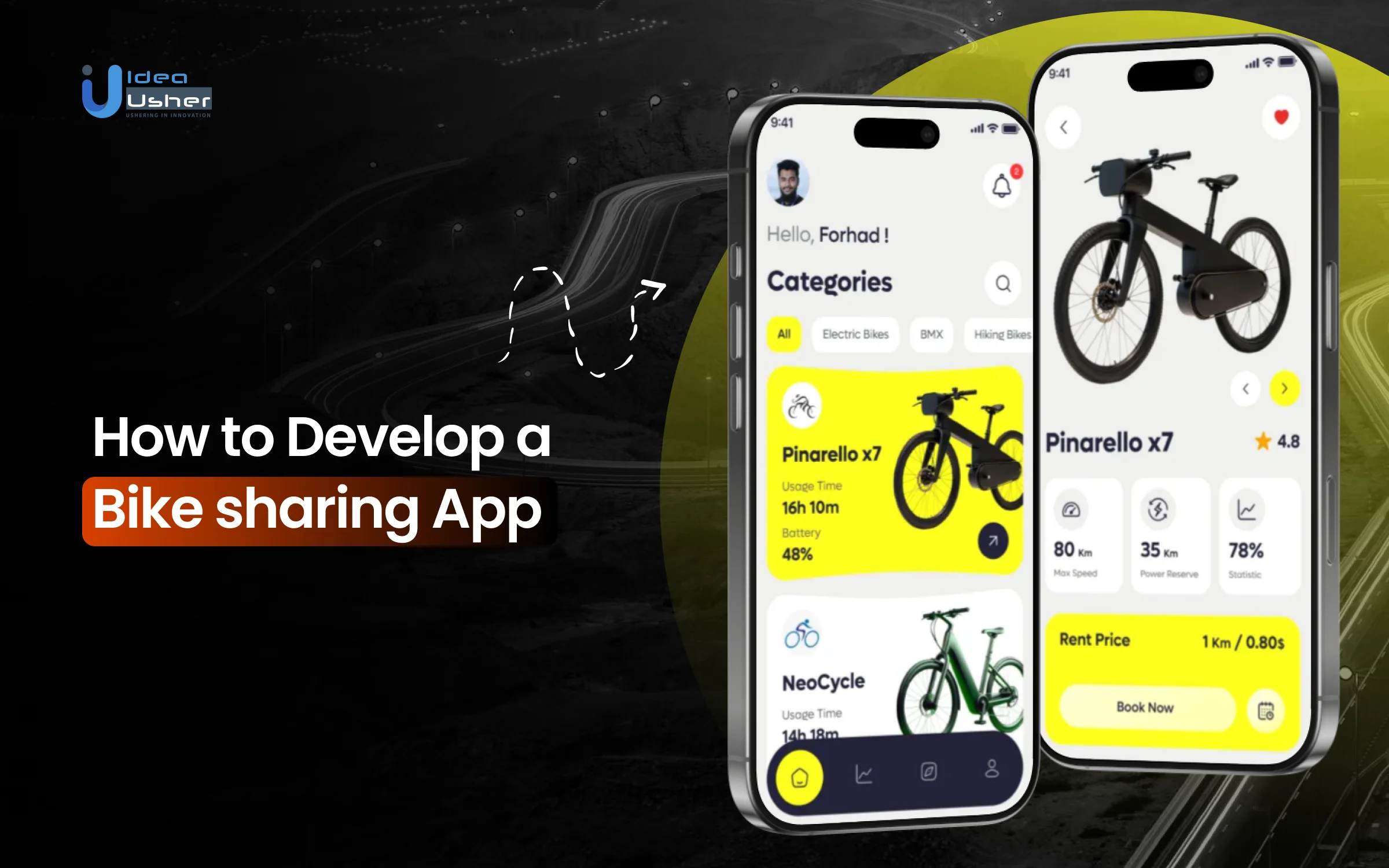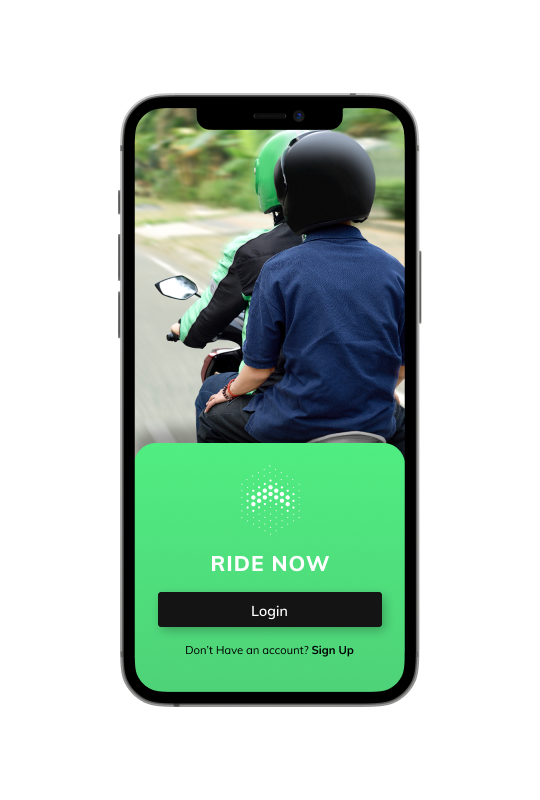In recent years, bike sharing has emerged as a popular mode of transportation in urban areas around the globe. The convenience, cost-effectiveness, and environmental benefits of bike sharing have driven its rapid adoption. As cities continue to grow and face transportation challenges, bike-sharing apps have become indispensable tools for urban mobility.
In 2026, developing a bike-sharing app presents an exciting opportunity to contribute to sustainable transportation solutions while tapping into a growing market.
Understanding Bike-Sharing Apps
A bike-sharing app is a digital platform that allows users to locate, reserve, and rent bicycles from various locations within a city. These apps provide a seamless experience for users, from registration to payment, making bike rentals convenient and accessible. The primary goal of a bike-sharing app is to facilitate easy access to bicycles, promoting an alternative mode of transportation that reduces traffic congestion and environmental pollution.
Key Features of a Bike-Sharing App
here are some features that a user
User Registration and Authentication
User registration is the first step in accessing a bike-sharing app. This feature typically includes options for users to sign up using their email, phone number, or social media accounts. Authentication processes, such as OTP verification or social media log in, ensure secure access to the app.
Bike Reservation System
A robust bike reservation system is crucial for the smooth functioning of a bike-sharing app. Users should be able to view available bikes in real time, reserve a bike for a specific period, and cancel reservations if needed. This system ensures that bikes are efficiently utilized and readily available for users.
GPS Tracking and Navigation
GPS tracking and navigation features enable users to locate nearby bikes and navigate to their destinations. Real-time tracking ensures that users can find bikes easily, and integrated navigation helps them reach their desired locations without hassle.
Payment Integration
Seamless payment integration is essential for a hassle-free user experience. The app should support multiple payment methods, including credit/debit cards, digital wallets, and other popular payment gateways. Secure and quick payment processing encourages user trust and satisfaction.
Customer Support System
An efficient customer support system addresses user queries and issues promptly. Features like in-app chat support, FAQs, and a helpline number enhance user confidence and satisfaction, ensuring that any problems are resolved swiftly.
Notifications and Alerts
Timely notifications and alerts keep users informed about their reservations, payment status, and any updates related to the service. Push notifications can also be used to promote special offers, new features, or important announcements.
Technology Stack for Development
Frontend Technologies
The front end of a bike-sharing app is responsible for the user interface and experience. Technologies like React Native, Flutter, and Swift (for iOS) or Kotlin (for Android) are commonly used to create responsive and intuitive interfaces. These technologies ensure that the app runs smoothly across various devices and platforms.
Backend Technologies
The backend of a bike-sharing app handles the server-side operations, including user data management, payment processing, and communication with the front end. Popular backend technologies include Node.js, Ruby on Rails, and Django. These frameworks provide robust and scalable solutions for handling large volumes of data and complex functionalities.
Database Management
Efficient database management is critical for storing and retrieving user data, bike information, and transaction records. Databases like PostgreSQL, MongoDB, and MySQL are commonly used in bike-sharing apps. These databases offer reliable performance, scalability, and security.
APIs and Third-party Integrations
APIs and third-party integrations play a vital role in enhancing the functionality of a bike-sharing app. Payment gateways, map services (such as Google Maps or Mapbox), and social media logins are examples of third-party services that can be integrated through APIs. These integrations streamline development and improve user experience.
Design and User Experience
An intuitive and visually appealing user interface (UI) is essential for user engagement. Key design principles include simplicity, consistency, and clarity. The UI should be designed to minimize user effort, with clear navigation and easily accessible features.
User Experience Best Practices
User experience (UX) encompasses all aspects of the user’s interaction with the app. Best practices include conducting user research, creating user personas, and performing usability testing. Understanding user needs and preferences helps in designing an app that meets expectations and enhances satisfaction.
Development Process
The development process begins with thorough planning and research. Understanding market trends, user preferences, and competitor offerings is crucial. This phase involves defining the app’s goals, target audience, and core features.
Prototyping and Wireframing
Prototyping and wireframing are essential steps in visualizing the app’s structure and functionality. Creating low-fidelity wireframes helps define the layout and flow of the app, while high-fidelity prototypes provide a detailed view of the final product.
Development Phases
The development process is typically divided into phases, including frontend and backend development. Each phase focuses on building specific features and functionalities. Agile methodologies are often used to ensure flexibility and iterative progress.
Testing and Quality Assurance
Testing and quality assurance are critical to delivering a reliable and bug-free app. Various testing methods, such as unit testing, integration testing, and user acceptance testing, are employed to identify and fix issues. Continuous testing throughout the development process ensures a high-quality product.
Deployment
Once the app is thoroughly tested and approved, it is ready for deployment. This involves publishing the app on platforms like the App Store and Google Play and ensuring it meets all platform guidelines and requirements. Post-deployment support and maintenance are also essential to address any issues and update the app as needed.
Monetization Strategies
Subscription models offer users access to bikes for a fixed period, such as weekly, monthly, or yearly subscriptions. This model provides a steady revenue stream and encourages long-term usage.
Pay-per-Use
The pay-per-use model charges users based on the duration or distance of their bike ride. This flexible option appeals to occasional users and tourists who prefer not to commit to a subscription.
Advertisement Integration
Integrating advertisements within the app can generate additional revenue. This can include in-app ads, sponsored content, or partnerships with local businesses. Careful placement and relevance of ads ensure they do not disrupt the user experience.
Legal and Regulatory Compliance
Compliance with local regulations is crucial for operating a bike-sharing service. This includes obtaining necessary permits, adhering to traffic laws, and ensuring bike safety standards. Understanding and following these regulations helps in avoiding legal issues and ensuring smooth operations.
User Data Protection
Protecting user data is paramount in building trust and credibility. Implementing robust security measures, such as data encryption, secure payment gateways, and privacy policies, ensures that user information is safe from breaches and misuse.
Marketing and Launch Strategies
Effective pre-launch marketing creates anticipation and awareness about the app. Strategies include social media campaigns, influencer partnerships, and teaser content. Engaging with potential users before the launch helps build a community and generate interest.
Launch Campaigns
A successful launch campaign includes promotional offers, media coverage, and launch events. Collaborating with local businesses and community organizations can amplify the reach and impact of the launch.
Post-launch Engagement
Post-launch engagement is vital for retaining users and encouraging app usage. Regular updates, user feedback integration, and loyalty programs keep users engaged and satisfied. Monitoring app performance and user behavior helps in making informed improvements.
Future Trends in Bike Sharing
Integrating bike-sharing services with public transport systems creates a seamless and efficient urban mobility solution. Users can combine bike rentals with bus or train rides, enhancing convenience and reducing travel time.
Use of Artificial Intelligence
Artificial intelligence (AI) is revolutionizing bike sharing by optimizing operations and enhancing user experience. AI can predict bike demand, improve maintenance schedules, and provide personalized recommendations to users.
Sustainability and Green Technology
As sustainability becomes a priority, bike-sharing services are adopting green technologies. This includes using electric bikes, renewable energy for charging stations, and sustainable materials for bike manufacturing. These initiatives contribute to reducing carbon footprints and promoting eco-friendly transportation.
Conclusion
Developing a bike-sharing app in 2024 offers a unique opportunity to contribute to sustainable urban mobility. By understanding the key features, choosing the right technology stack, and following best practices in design and development, you can create a successful bike-sharing app that meets the needs of modern urbanites. As the demand for convenient and eco-friendly transportation solutions grows, your app can play a vital role in shaping the future of urban mobility.
Work with Ex-MAANG developers to build next-gen apps schedule your consultation now
FAQs
How do I start developing a bike-sharing app?
To start developing a bike-sharing app, begin with thorough market research, define your target audience, and outline the core features of your app. Assemble a skilled development team, choose the right technology stack, and create a detailed project plan.
What are the essential features of a bike-sharing app?
Essential features of a bike-sharing app include user registration and authentication, a bike reservation system, GPS tracking and navigation, payment integration, a customer support system, and notifications and alerts.
How can I monetize a bike-sharing app?
Monetization strategies for a bike sharing app include subscription models, pay-per-use options, and advertisement integration. Each model caters to different user preferences and provides a steady revenue stream.
What are the legal requirements for operating a bike sharing service?
Legal requirements vary by location but typically include obtaining necessary permits, adhering to traffic laws, and ensuring bike safety standards. Compliance with local regulations is crucial for smooth operations and avoiding legal issues.
How can I ensure the security of user data in a bike sharing app?
To ensure the security of user data, implement robust security measures such as data encryption, secure payment gateways, and comprehensive privacy policies. Regular security audits and updates help in maintaining data protection.




















